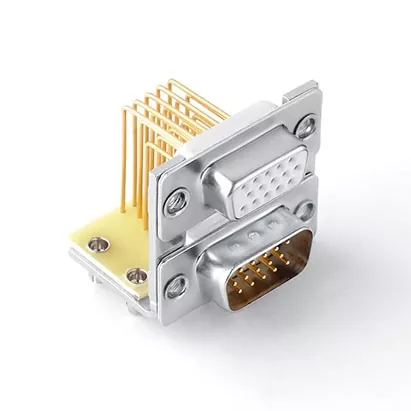How to Select the Right 15 Pin Dual Port Right Angle D-Sub Connector for Your Project
2024-11-13
Choosing the right connector for your project is crucial to achieving stable connections and optimal system performance. When it comes to complex setups, the 15 Pin Dual Port Right Angle D-Sub Connector is a standout solution, particularly in systems requiring multiple data or signal connections. In this guide, we’ll walk you through the main considerations and tips to help you select the right D-Sub connector for your specific needs.
Why Consider a 15 Pin Dual Port Right Angle D-Sub Connector?
This connector type is part of the D-sub family, known for its durability and versatility. The 15 pins allow multiple connections within a single interface, and the dual-port setup enables two connections in one. The right-angle design allows it to mount at a 90-degree angle to a PCB or panel, making it a preferred choice for systems with limited space. Here’s what to keep in mind when selecting this connector.
1. Determine Your Application Requirements
Before purchasing a 15 Pin Dual Port Right Angle D-Sub Connector, assess the demands of your system. This will ensure compatibility with your equipment and help prevent connectivity issues down the line.
- Signal Type: Will the connector transmit data, audio, video, or a mix of these? This will help you determine if the 15-pin configuration is sufficient for your application.
- Environmental Conditions: Consider the environment where the connector will be used. For example, in industrial settings, connectors may need to withstand exposure to dust, moisture, and vibration.
2. Choose the Right Material and Construction
Connector materials play a significant role in both durability and signal performance. The construction of D-sub connectors typically includes a metal shell and carefully engineered pins, and the material used in each part impacts durability, signal integrity, and cost.
- Shell Material: The outer shell is usually made of steel or aluminum. Steel provides strong mechanical protection, while aluminum offers resistance to corrosion and is lighter—ideal for weight-sensitive applications.
- Pin Material and Coating: The pins are often brass or phosphor bronze, plated with gold or nickel to prevent corrosion and improve conductivity. Gold plating is especially beneficial in high-frequency applications because it reduces resistance and signal loss.
3. Connection Stability and Mounting Options
The way your connector attaches to other components affects both stability and ease of installation. Here are the main points to consider:
- Screw Lock Mechanism: The screw-lock feature prevents accidental disconnection and keeps the connector stable in environments with vibration. This feature is highly recommended for applications in industrial automation and computing.
- Right Angle Mounting: The 90-degree angle provides a compact profile, making it ideal for setups with restricted space. Right-angle connectors are often used in PCBs where vertical space is limited.
4. Compatibility with Other Components
The 15 Pin Dual Port Right Angle D-Sub Connector needs to be compatible with other components in your system. This includes the physical interface as well as the electrical requirements:
- Voltage and Current Ratings: Ensure that the connector can handle the electrical requirements of your system. Exceeding these ratings could lead to overheating or signal loss.
- Compatibility with Existing Ports: Check that the connector’s dual-port configuration aligns with your system’s input or output ports. This compatibility is essential for seamless integration into an existing setup.
5. Cost and Supplier Reliability
Finally, take into account the cost and reputation of the supplier. While high-quality connectors may come at a higher price, their reliability and durability can prevent costly repairs or replacements.
- Reputable Supplier: Choose a supplier with a track record of providing quality components. A reliable supplier will also provide warranties and customer support, which can be invaluable if you encounter issues.
- Budget Considerations: Compare prices to find a balance between cost-effectiveness and quality. In many cases, a modest investment in a high-quality connector can lead to savings in the long run.
Selecting the right 15 Pin Dual Port Right Angle D-Sub Connector for your project involves understanding your system’s requirements and environmental conditions. By choosing a connector with the appropriate pin configuration, construction materials, and mounting options, you can ensure reliable and durable connections. Whether you’re working in computing, industrial automation, or multimedia, this versatile connector can meet a variety of needs while keeping your system compact and organized.



